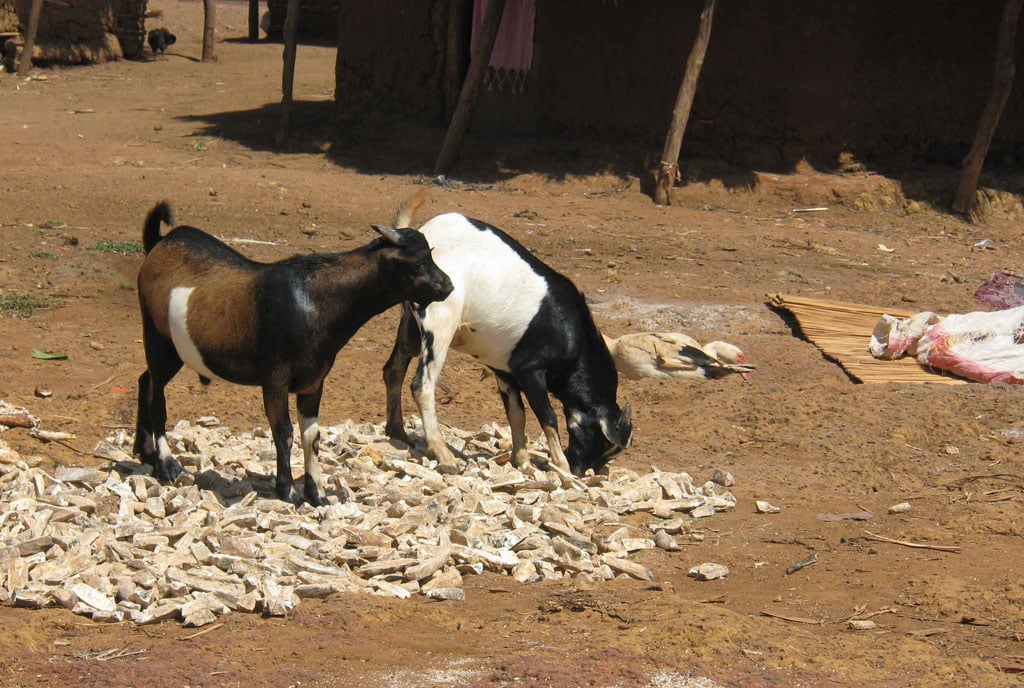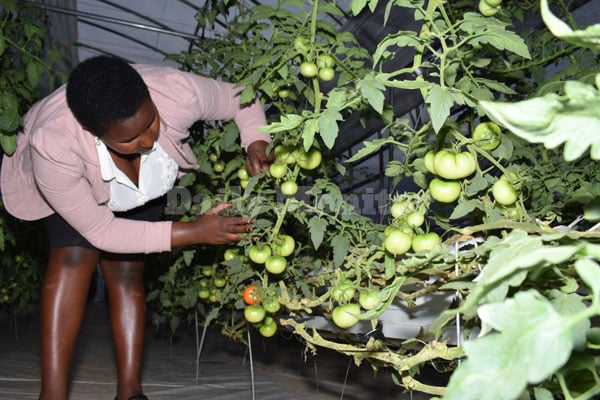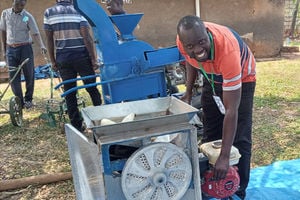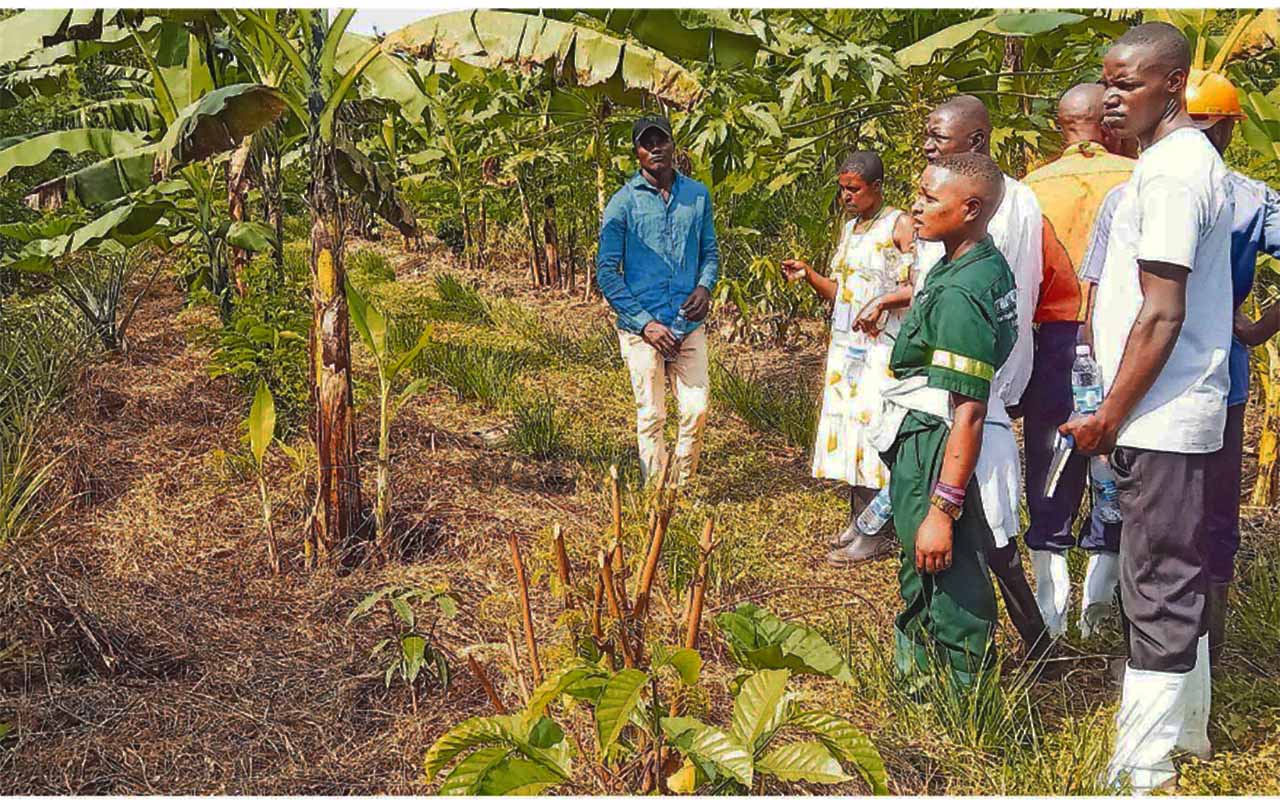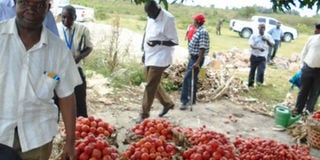
Farmers in Karusandara Sub-county, Kasese District, stuck with their tomato harvest. PHOTO BY ENID NINSIIMA
Tomatoes whose scientific name is name is Solanum esculentum is one of the most promising vegetables whose production is being intensified in Uganda.
However, tomato yields remain low due to several constraints and because of this, scientists at the National Agricultural Research Organisation (Naro) carried out a study aimed at identifying production, best practices and marketing practices and constraints affecting tomato farming.
Background
In a publication by scientists from the National Agricultural Research Organisation in Research Gates, the scientists mention that tomato is among the widely grown vegetables globally with an estimated annual production of 182 million tonnes from 40.8 hectares of land.
The scientists led by Dr Gabriel Ddamulira, the programme leader, horticulture and oil crops, conducted a study in tomato-growing districts in the country.
This is aimed at identifying production, best practices and marketing practices as well as constraints affecting tomato productivity.
The study involved interviewing 240 farmers and 16 key informants. According to the team the crop is ranked sixth among the most consumed crops worldwide.
Survey sites
The study was conducted in eight districts from five agro-ecological zones of Uganda. The districts were selected according to their suitability in tomato production and the level of production intensity.
The agro-ecological zones and districts include Lake Victoria Crescent, Wakiso and Mukono, Central woodland savannah Nakaseke, Western medium-high farmlands Mbarara and Kasese, south western highlands Rukiga and Mount Elgon farmlands Mbale and Bulambuli. The survey was conducted between April to July 2019, which coincided with the main and the first tomato production season.
Tomato varieties
There are five tomato varieties mostly grown by farmers namely Asilla, Tengeru94, Rambo, Novela F1 and Riogrande.
The high preference of Asilla F1, Tengeru97, Rambo and Novela F1 was due to their being hybrids with high yielding potential and long shelf-life.
Farmers prefer high yielding tomato varieties which ensure increased production using less land.
However, there were other tomato varieties grown on small-scale, which included: Commando, Eden F1, Ranger F1, Victoria, VFN Roma, MT 56, Marglobe, Vikima, Omega, Opello and Sifa, among others.
Crop management
The farmers use three forms of planting materials which include seed, seedlings from fellow farmers and volunteer tomato crops from the previous season.
The results also established that 90.5 percent of the farmers planted tomato in lines, while 9.5 percent staggered their planting. This indicated that most farmers adopted line planting practice.
Farmers still used different spacing, notably 30 by 45cm, 45 by 45cm, 60 by 60cm, 75 by 75cm, 90 by 90cm and 100 by 100 cm, which could not provide them optimum yield except for the 60 by 60 cm
Farmers testified that tomato performs poorly under weed infested gardens and as a result they always endeavoured to keep their fields weed-free.
Weeding is predominantly characterised by use of hand hoes and application of herbicides which are applied prior to planting.
Majority of farmers weed three times, though a few with high-weed densities in their gardens weed up to 6 times in a season.
In relation to mulching, 73.3 percent of farmers reported mulching their gardens, while 27.3 percent did not.
Farmers planting tomatoes during dry season irrigate their farms to keep the crops surviving. Foliar fertilisers namely super and rapid are the most applied fertilisers followed by Diammonium phosphate (DAP), cattle manure, urea and NPK. Other fertilisers applied included goat manure, compost and single super phosphate (SSP). The high use of foliar fertiliser was due to its rapid response to plant nutrient needs.
Pests and disease
Farmers reported caterpillars, thrips, worms and white flies as the major pests of tomato. However, the study revealed that caterpillars are emerging as pests of major importance. The other pests such as moth, spider mites, leaf hoppers and snails were also mentioned as minor pests.
Among the districts sampled, most tomato pests occurred in the central region districts followed by districts in eastern Ugandan.
The variation in tomato pest-occurrence in relation to districts in different regions is attributed to differences in weather conditions across the regions.
Pests and disease management
The farmers interviewed reported that several methods are used to control pests and diseases in tomato.
Majority of them use pesticides and fungicides to manage tomato pests and disease.
Most farmers perceive the use of chemicals as the most effective method to control pests as compared to other methods.
However the scientists recommend the use of the egg yolk mixture that is found to be effective at managing tomato pests as well as getting rid of infected plants.
Postharvest handling and marketing
The study established that tomato production is being mainly undertaken by farmers who are working individually with only 37.1 percent working in groups.
Among the farmers in social groups, majority are members of farmers’ groups and members of a village saving and loan association. Most of the farmers sell their produce individually with a few bulking and selling in groups. Tomato farmers use mainly five materials for collecting and transporting tomato to the markets, namely wooden boxes, plastic basins and woven baskets.

